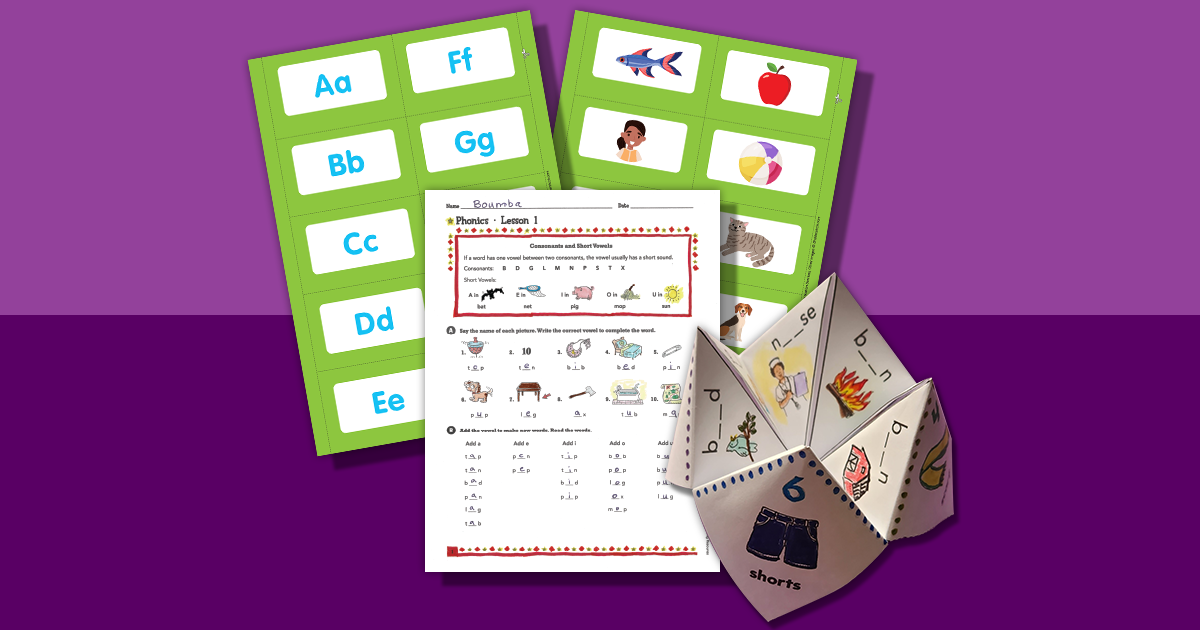Looking for new resources to help you put the Science of Reading into practice in your classroom? Then you've come to the right place!
In this three-part series, we’ve invited K–6 teachers from around the nation to tell us about the Scholastic Teachables resources they’re using to support evidence-based literacy instruction.
And we're not just sticking to phonics. We'll explore the full range of elements that make up the interdisciplinary body of research known as the Science of Reading. In fact, we'll be following the lead of top researchers and recommending resources that support the two types of instruction required by the Science of Reading:
1. Code-Focused - Skills that help students translate letters into sounds, such as phonics, phonemic awareness, and fluency
2. Meaning-Focused - Skills that help students understand what they are reading, such as vocabulary and comprehension
In part one of this series, we're thrilled to welcome Martha Garcia, a K–8 Title I Instructor at St. John Berchman's Catholic School in San Antonio, Texas. Here are the Scholastic Teachables resources she’s using to to implement the Science of Reading in her classroom:
1. Alphabet Flash Cards: First Phonics - Code-Focused
While I use these flash cards in the traditional ways, I also print out the picture cards and use them to discuss blends and digraphs in words. For example, I lay them out on a table and say, “I am thinking of a word that has the /sh/ sound.” I invite a student to find a card with the /sh/ sound, such as the one with the image of a fish.
2. Phonics Fun Flaps - Code-Focused
Scholastic Teachables has more than 100 phonics fun flaps manipulatives that my kids LOVE! I use them in a variety of ways. My younger students explore sounds with them, then take turns decoding the words. My third through fifth graders recently used the words on this R-Controlled Vowels Fun Flap to build silly stories.
3. Mini-Books - Code- and Meaning-Focused
My youngest students (grades K–1) love to read these books over and over. We read each book more than once because we practice decoding, inferencing, and sequencing. I also use them for writing practice. For example, with this book, I would ask, “How many of you have a dog?” or “What activity that we saw in the book have you done with your dog?” Then, the kids use their answers to practice writing from the first-person perspective.
4. Texts - Meaning-Focused
With my older kids (Grades 6–8) I use nonfiction texts, like these biographies (Lin-Manuel Miranda usually being a favorite), and short stories, like Talent Show Contest. The nonfiction texts expand background knowledge and vocabulary. The short stories invite my students to infer, use critical thinking skills, strengthen reading comprehension, and decode difficult words. My students love them because they are entertaining, too!
5. Phonics and Word Study Weekly Lessons - Code-Focused
These resources for Grades 3–6 by phonics expert Wiley Blevins have everything you need for a quick, easy phonics lesson every day of the week. They are great on their own, and they offer inspiration for other activities. For example, after doing the speed drill on the Reading Big Words lesson, I write the words on flash cards that I hide throughout my classroom. Then I have my students look for the words. In order to keep a word they find, they have to decode it within 5 seconds. I use these with my older students as well to review vital phonics skills.
6. Phonics Unit Skill Sheets - Code-Focused
These skills sheets for Grades 3–6 are a fantastic way to do quick, informal assessments of your students’ skills. They help me assess whether my students understand specific spelling patterns when reading. I am especially fond of the puzzles, which are high-interest for my students and give me valuable assessment information. They are also versatile enough that students even take our vocabulary words and make similar puzzles for one another, flexing their creativity and decoding skills.
I love how flexible and inspirational the Scholastic Teachables resources are. They help me bring the Science of Reading to life in my classroom.
Stay tuned for Part 2 when we invite first-grade teacher Laura Zaleski to share her favorite Science of Reading resources on Scholastic Teachables.
